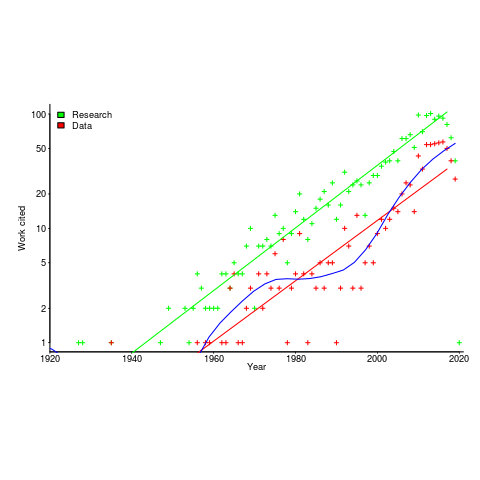The dark-age of software engineering research: some evidence
Looking back, the 1970s appear to be a golden age of software engineering research, with the following decades being the dark ages (i.e., vanity research promoted by ego and bluster), from which we are slowly emerging (a rough timeline).
Lots of evidence-based software engineering research was done in the 1970s, relative to the number of papers published, and I have previously written about the quantity of research done at Rome and the rise of ego and bluster after its fall (Air Force officers studying for a Master’s degree publish as much software engineering data as software engineering academics combined during the 1970s and the next two decades).
What is the evidence for a software engineering research dark ages, starting in the 1980s?
One indicator is the extent to which ancient books are still venerated, and the wisdom of the ancients is still regularly cited.
I claim that my evidence-based software engineering book contains all the useful publicly available software engineering data. The plot below shows the number of papers cited (green) and data available (red), per year; with fitted exponential regression models, and a piecewise regression fit to the data (blue) (code+data).

The citations+date include works that are not written by people involved in software engineering research, e.g., psychology, economics and ecology. For the time being I’m assuming that these non-software engineering researchers contribute a fixed percentage per year (the BibTeX file is available if anybody wants to do the break-down)
The two straight line fits are roughly parallel, and show an exponential growth over the years.
The piecewise regression (blue, loess was used) shows that the rate of growth in research data leveled-off in the late 1970s and only started to pick up again in the 1990s.
The dip in counts during the last few years is likely to be the result of me not having yet located all the recent empirical research.
Recent Comments